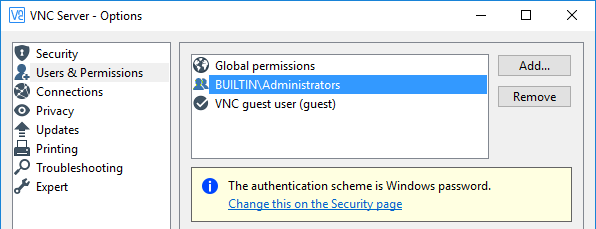
Larry will have a 640 by 480 screen, as will Moe.

XFCE is more light-weight than Gnome or KDE and available from the "extras" repository. Other popular desktop environments are "KDE" and "XFCE-4.4". You can use the command yum groupinstall "GNOME Desktop Environment" to install the Gnome Desktop and requirements, for example. Make sure to install a window manager in order to get a full-featured GUI desktop. You can use the command: yum install vnc to install the client if: rpm -q vnc shows that it is not already installed. If the server is not installed, install it with the command: yum install vnc-server

The result will be either package vnc-server is not installed or something like 4. The server package is called 'vnc-server'. This HOWTO shows you how to configure VNC using the 'vncserver' service as supplied by CentOS. There are several ways to configure the vnc server. Your workstation ( Linux or Windows ) is only displaying a copy of the display ( real or virtual ) that is running on the remote machine. Unlike a remote X connection, the xserver is running on the remote computer, not on your local workstation.

VNC is used to display an X windows session running on another computer.


 0 kommentar(er)
0 kommentar(er)
